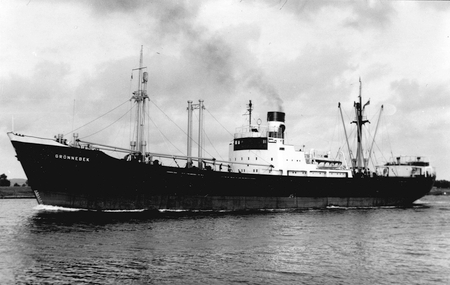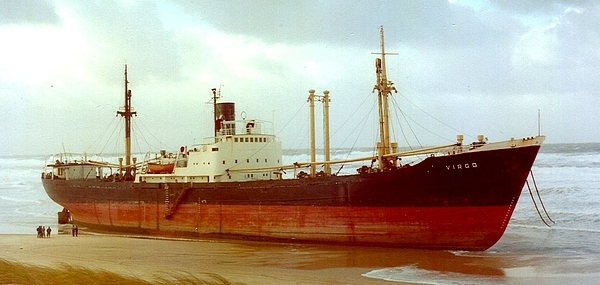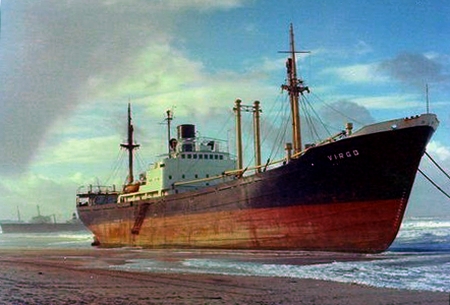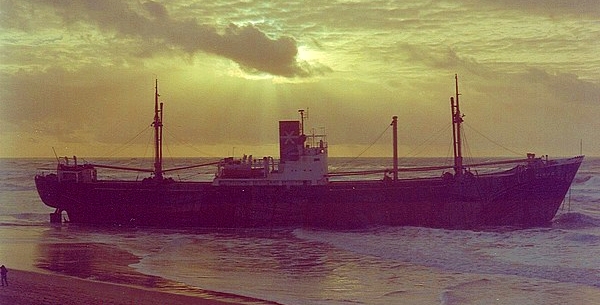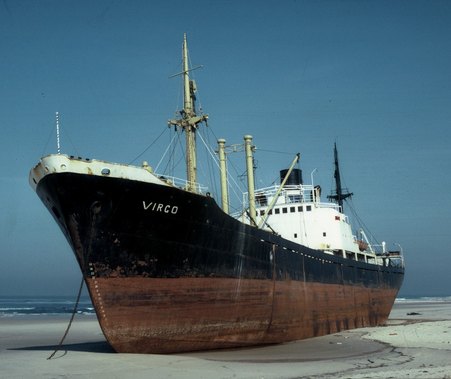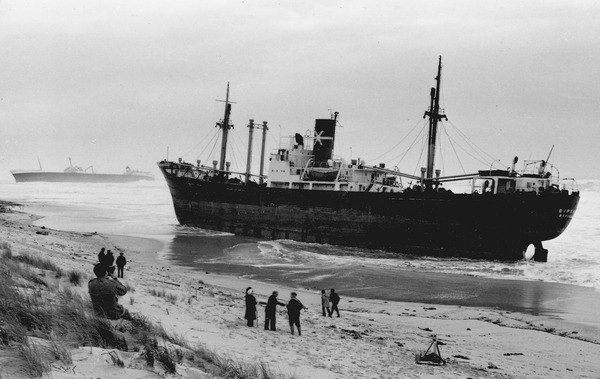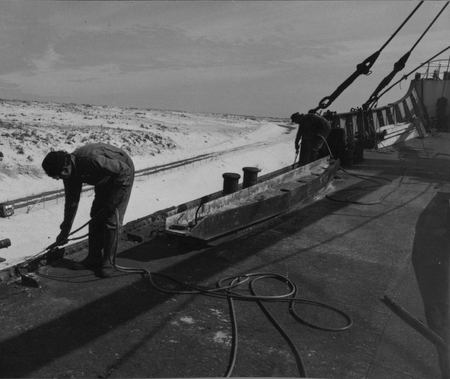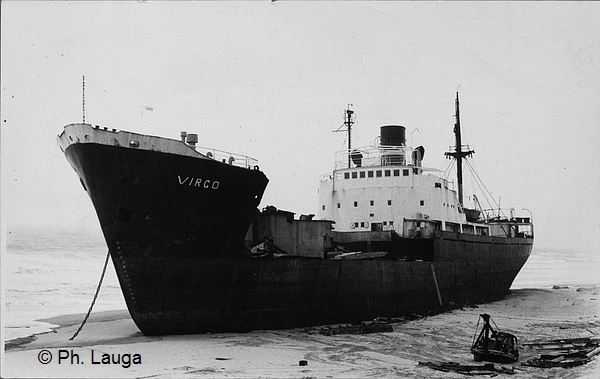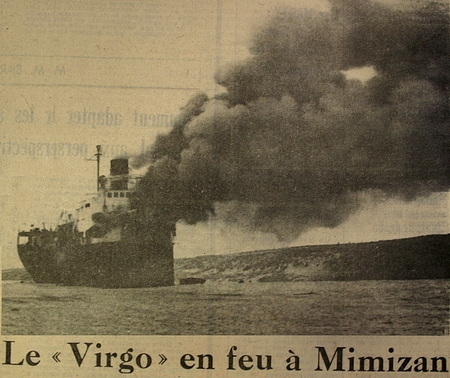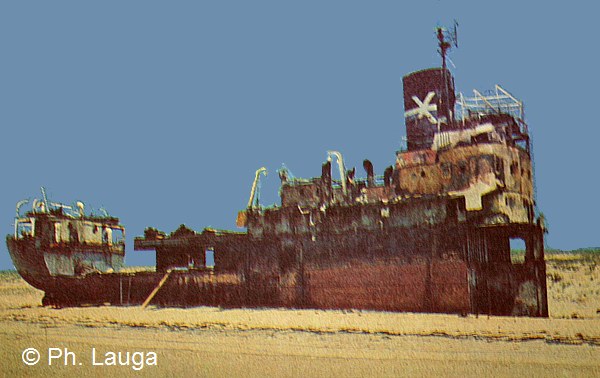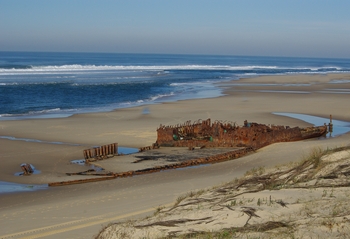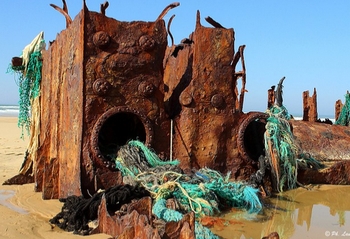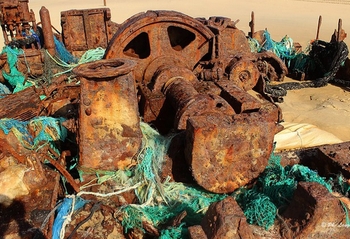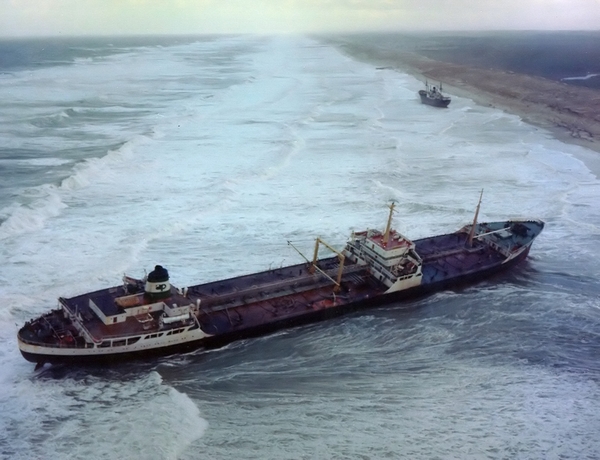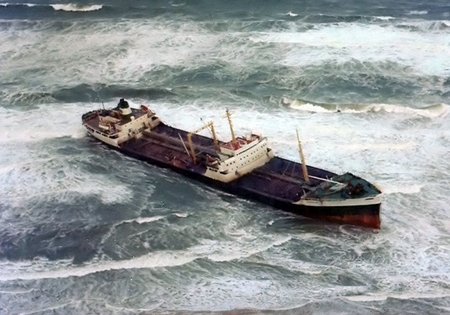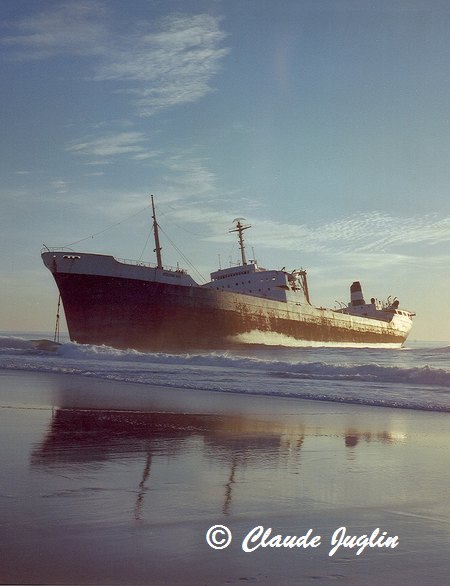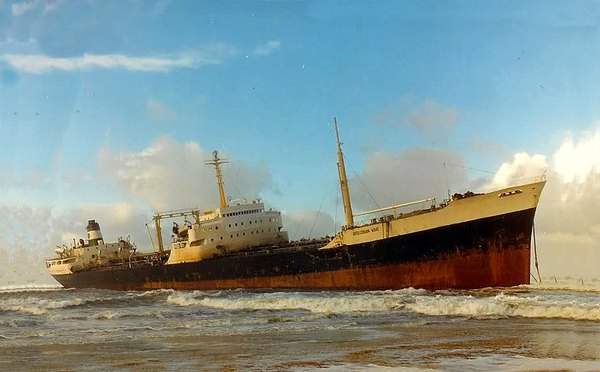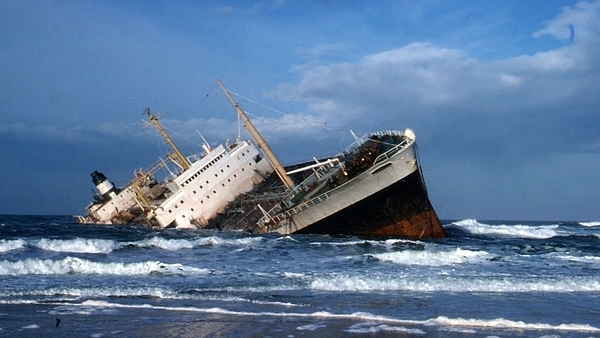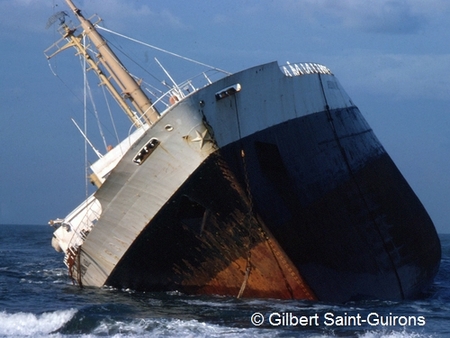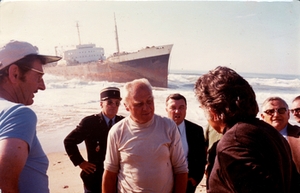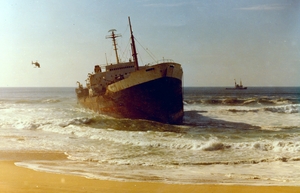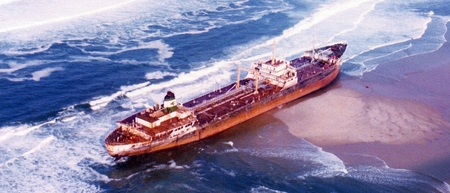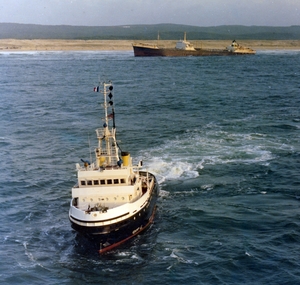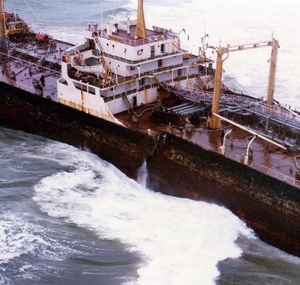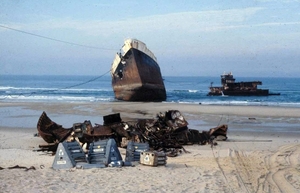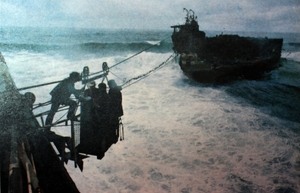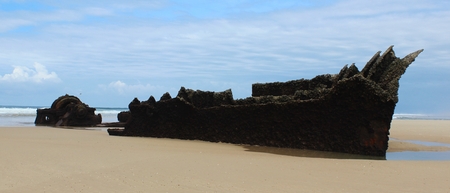LA MORT DU VIRGO.
Le cargo VIRGO de 109,25 mètres de long, battant pavillon grec, construit sous le nom de GRÖNNEBEK en 1954 par les chantiers Orenstein-Koppel à Lübeck en Allemagne, est arrivé à Bayonne de Eilat en Israël le 25 novembre 1976 pour décharger 4648 tonnes de phosphates. Le 30 novembre, il quitte Bayonne direction Lisbonne au Portugal.
Dans la nuit suivante, la tempête en mer est terrible. Au large de Bilbao, dans l’impossibilité de naviguer à l’ouest, le commandant du VIRGO fait mettre cap au Nord pour tenter de fuir l’ouragan. Pendant 24 heures, le vieux cargo à vapeur va partir à la dérive vers le nord. Il finit par s’échouer à 5 km au sud de Mimizan sur la plage de Lespecier, à 3 heures du matin le 2 décembre 1976 dans des creux de 14 mètres, flanc tribord vers la côte.
Depuis la plage, les secours s'organisent et l'équipage peut quitter le navire au petit matin.
Les curieux commencent à affluer vers l'épave du cargo abandonné et certains redécouvrent l'instinct de pirate de leurs ancètres gascons. Quelques jeunes intrépides réussissent en effet à monter à bord et s'emparent de cigarettes, de conserves et dérobent même le compas du navire. Ils sont capturés par les gendarmes en quittant le bord !
Quelques jours plus tard, à la faveur d'un nouveau coup de mer, l'océan s'empare du VIRGO qui semble vouloir quitter la plage par ses propres moyens mais les vagues le rejettent presque aussitôt, flanc bâbord vers la côte cette fois-ci.
Le destin du vieux cargo est rapidement scellé. Il sera démoli sur place. Le démentèlement commence au mois d'avril 1977, mais début juillet, un violent incendie ravage les restes de l'épave. Les pompiers mettront de longues heures à circonscrire le feu et éviter qu'il n'atteigne les 70 tonnes de fuel lourd qui résident encore dans les soutes.
Le vieux cargo grec est finalement entièrement démentelé à la fin de l'été 1977.
Aujourd'hui, lorsqu'on se promène sur la plage de Lespecier, on peut encore observer quelques vestiges du vieux navire au milieu de la plage.
THE DEATH OF VIRGO.
The steam-ship VIRGO, 109.25 meters long, flying the Greek flag, built under the name GRÖNNEBEK in 1954 by Orenstein-Koppel yards in Lübeck in Germany, arrived in Bayonne on November 25, 1976, from Eilat, Israel to unload 5648 tons of phosphates. On November 30, she leaves Bayonne, heading for Lisbon, Portugal.
In the following night, the storm at sea is terrific. Off Bilbao, the vessel is unable to sail to the west. So, the master of VIRGO changes the heading to North to try to avoid the hurricane. But the sea and the wind are too strong. For 24 hours, the old steam ship drifts and runs aground 5 km south to Mimizan, on the Lespecier beach, at 3 O'clock in the morning, on December 2th, 1976, with waves up to 14 m, starboard towards the coast.
From the beach, the rescues are organized and the crew can leave the vessel early in the morning.
Curious people begins to arrive on the beach to see the abandoned vessel and some of them rediscover the pirate instinct of their "Gascon" ancestors. Some intrepid young guys successfully board the ship and steal what they find, cigarettes, cans and even the ship's compass. They are caught by the policemen as they leave the board!
A few days later, the ocean takes the VIRGO again, because of a new gale. VIRGO seems to leave the beach alone, but waves reject her immediately on the sand, port side toward the coast, this time, further up the beach. From there, she will never move again.
The destiny of the old ship is quickly sealed. She will be broken up on the sand. The dismantling operations begin in April 1977 but in early July, a massive fire destroyed the relics of the vessel. Firefighters will fight long hours to extinguish the fire and prevent it from reaching the 70 tonnes of fuel oil still remaining in the tanks of the Virgo.
The old Greek ship is finaly completely broken up at the end of summer 1977.
Today, when you walk on the beach of Lespecier, you can still see some relics of the old ship on the sand.
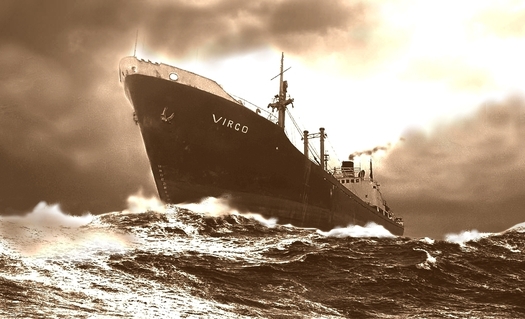
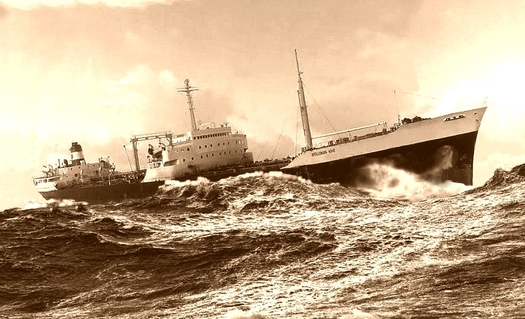
Vision of the VIRGO and the APOLLONIAN WAVE during the gale (Ph. Lauga)
